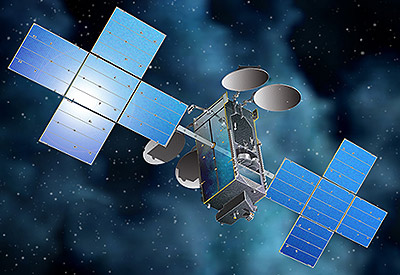
Back to selection
GEO Satellite
Terrestar-1 (EchoStar-T1, CANSAT-24) GEO
succesfull
Launch date
1 July 2009
Dedicated Mission
Country

Purpose
Communication
Position
111.1° West
Manufacturer
Launch operator
Launch vehicle
Ariane 5ECA
Expected lifetime
15+ Years

Region
North America Region
TerreStar-1: High-Capacity Mobile Communications Satellite for North America
Overview
TerreStar-1 is a high-powered American communications satellite originally operated by TerreStar Corporation. Designed to deliver mobile voice, data, and messaging services across North America, TerreStar-1 was built by Space Systems/Loral using the LS-1300S satellite bus. The satellite carries E/F band (IEEE S-band) transponders and uses a massive 18-meter (59-foot) reflector antenna for signal transmission.
Launched on July 1, 2009, TerreStar-1 was positioned at 111° West longitude in geostationary orbit and was expected to operate for 15 years.
Satellite Highlights
-
Launch mass: 6,910 kg (15,230 lbs)
-
Platform: LS-1300S (Space Systems/Loral)
-
Coverage: Mobile communications across North America
-
Transponders: E/F band (IEEE S-band)
-
Reflector size: 18 meters (59 ft)
-
Service lifespan: 15 years
-
Orbital position: 111° West
At the time of its launch, TerreStar-1 was the second most massive commercial communications satellite ever launched to geosynchronous transfer orbit. Its record was later surpassed by Telstar 19V, launched in 2018.
Launch Details
-
Launch date: July 1, 2009, at 17:52 GMT
-
Launch vehicle: Ariane 5ECA
-
Launch site: ELA-3, Guiana Space Centre, French Guiana
-
Launch provider: Arianespace
The launch faced delays due to inclement weather and two aborted countdowns before its successful liftoff. After separation from the launch vehicle, TerreStar-1 used its onboard propulsion system to reach its final geostationary orbit.
Post-Launch and Ownership Transition
Following financial struggles, TerreStar Corporation filed for Chapter 11 bankruptcy. During this period, the NGO A Human Right attempted to raise funds to acquire the satellite and use it to provide free basic Internet access to underserved populations in developing countries.
However, Dish Network won the bankruptcy court auction with a successful bid of $1.375 billion. In August 2011, Dish submitted a request to the Federal Communications Commission (FCC) to utilize TerreStar-1’s wireless spectrum to launch its own wireless broadband services.
Related Satellite
A second satellite originally named TerreStar-2, later rebranded EchoStar XXI, was launched in 2017 and is now positioned at 10° East.
GEO Satellite
Terrestar-1 (EchoStar-T1, CANSAT-24)
succesfull
GEO Satellite
Terrestar-1 (EchoStar-T1, CANSAT-24)
succesfull